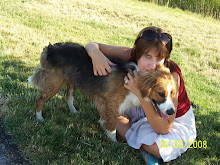
I have already written about how important the first 24 hours are when you bring home a new dog. (Please read "Bringing home a new dog" for a refresher) But, I got a call last night about a recently adopted dog. The dog had only been in his new home for three hours and the new owners had already changed their mind about him. Sadly, this is common.
The first 24 hours you have with your dog are arguably the most crucial. Remember, your new dog does not yet know this is his new pack, they do not know the rules, they do not even realize this house is their house. Many times people get a "house trained" dog, and the first thing the dog does is pee on their carpet. It is not that the dog isn't house broke, it is simply that they are not trained to your house.
When you get a new dog you must follow certain steps. 1. The leash! never bring a new dog into your car or house without the leash. It gives them guidance, shows them rules, and makes them feel secure.
2.Do NOT let them have free roam of your house. It is confusing to them. When a new dog comes into a pack they are on high alert to learn the rules and their place. If you do not relay those rules in a way they understand how can you fault them for not knowing? Keep them on leash in the house, and allow them to explore only what you say they can. This teaches them that they are the follower in this new pack and you are the leader. You can show them where the bathroom spot is, what toys are okay to play with, and how much excitement is allowed in the home.
Dogs are a sponge the first 24 hours. They are hard wired to be alert to the rules of the pack they are in. Correct the dog with a sound or a tug on the leash any time they go to do something that is not allowed in your pack. It is not mean or cruel. You are not hitting or yelling at them. You are just saying "This is my pack, follow my rules." This is what makes a dog feel secure.
3. Save the snuggles. This is so important. We all want to love on our new pet, but first your dog has to learn to respect you. While they may respond to lots of petting and attention you aren't helping them transition into your pack. The pack leader DOES NOT give affection first. In the wild when a dog is following the rules, showing respect, and approaching the pack leader, only then will the alpha return with affection. This rule is the hardest to follow but remember it is for the dog's benefit. He needs to know where he fits and what role he plays in your home. Love and affection does not make a dog feel safe. Rules and boundaries do.
4. Don't expect perfection. Even the most well behaved dog on earth will not be perfect 100% of the time. Dogs are not lovely floor statues. You will make mistakes and so will they. Be patient. If your dog has done something you don't like ask yourself "Was I communicating with him in a way he understands? How can I do it differently next time?"
*Remember, a dog is only as strong as the pack it goes into.











